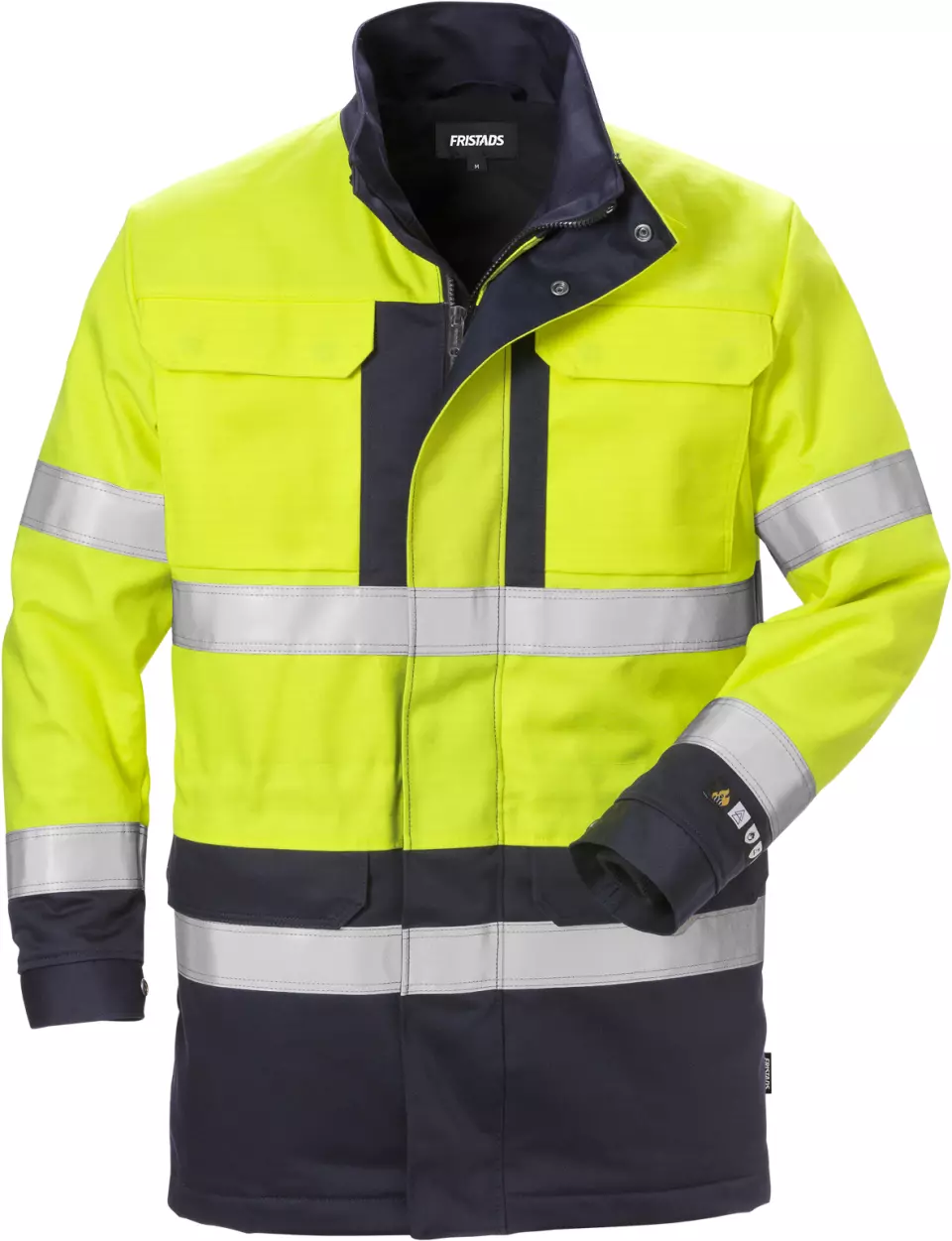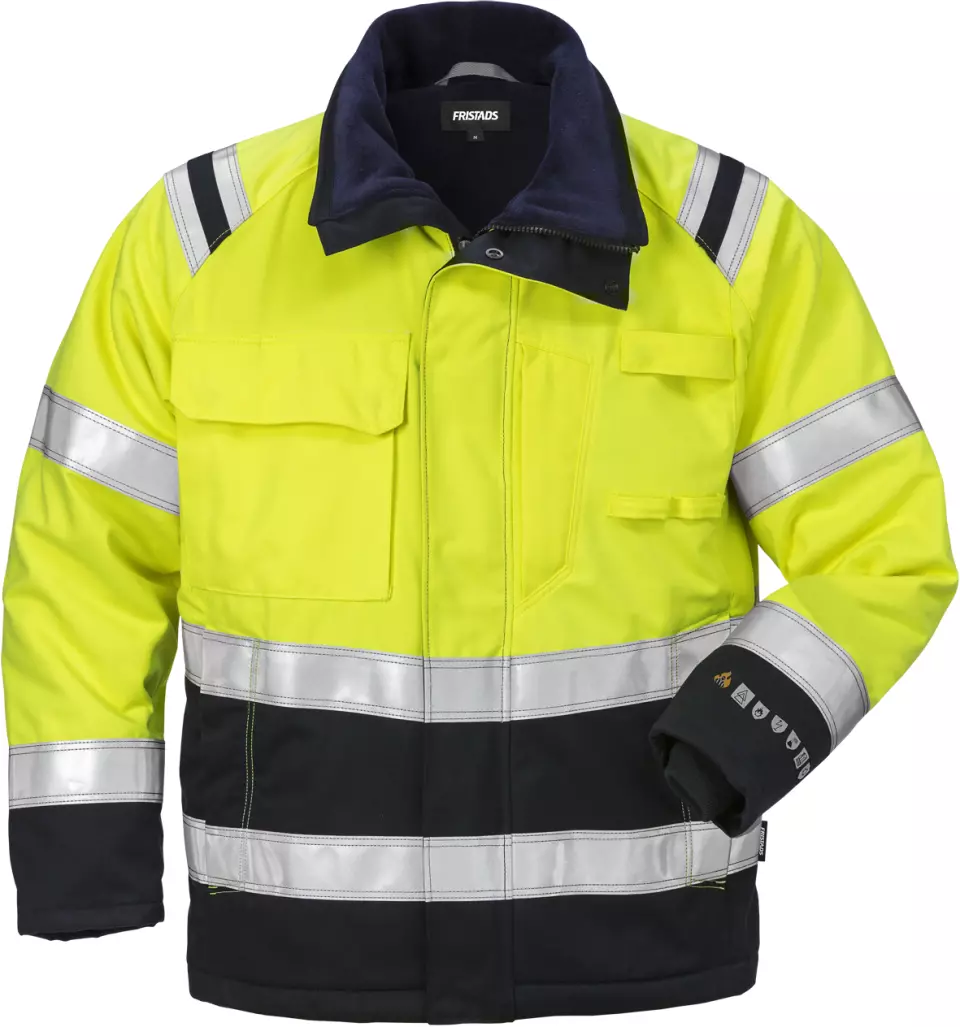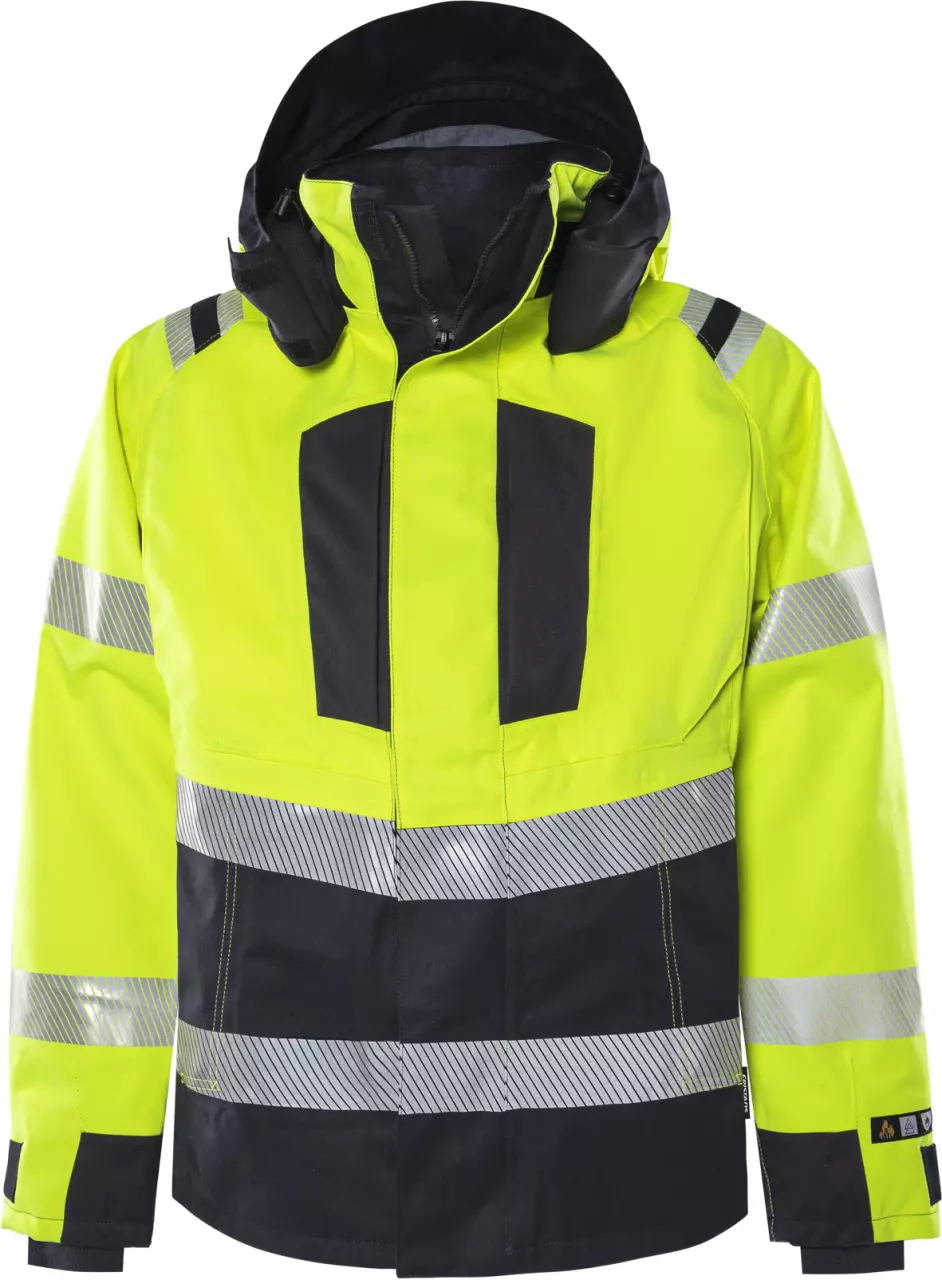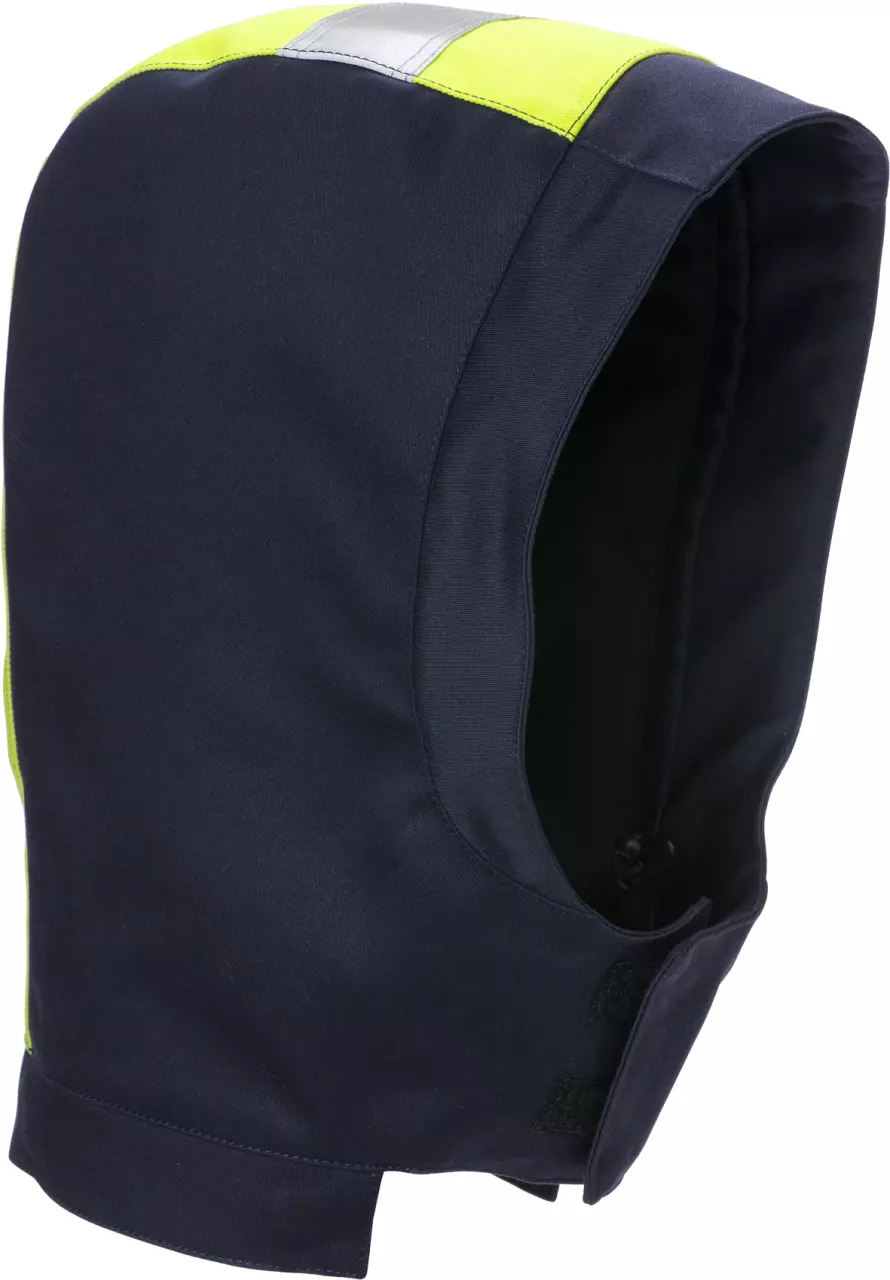
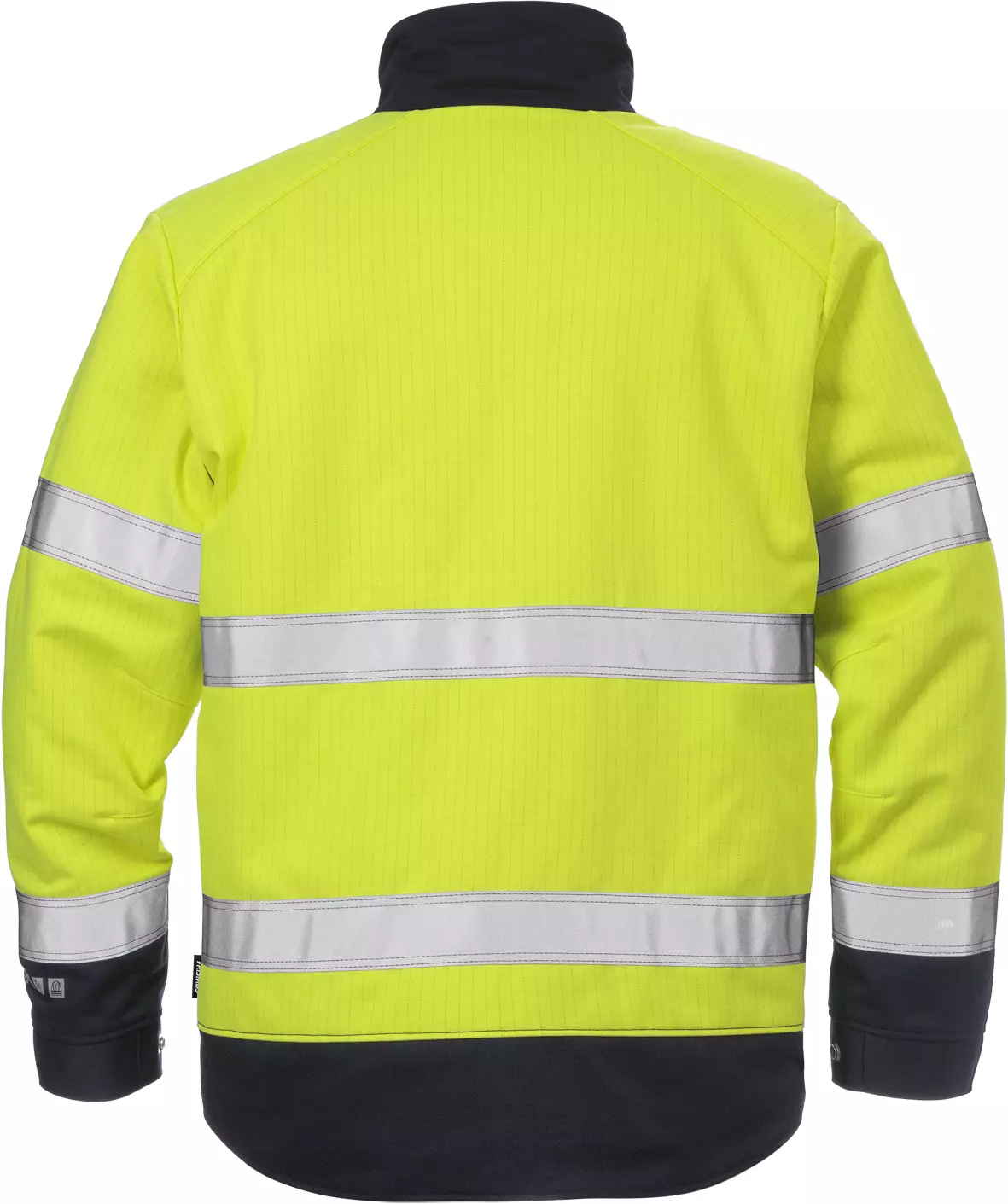
Features You'll Love
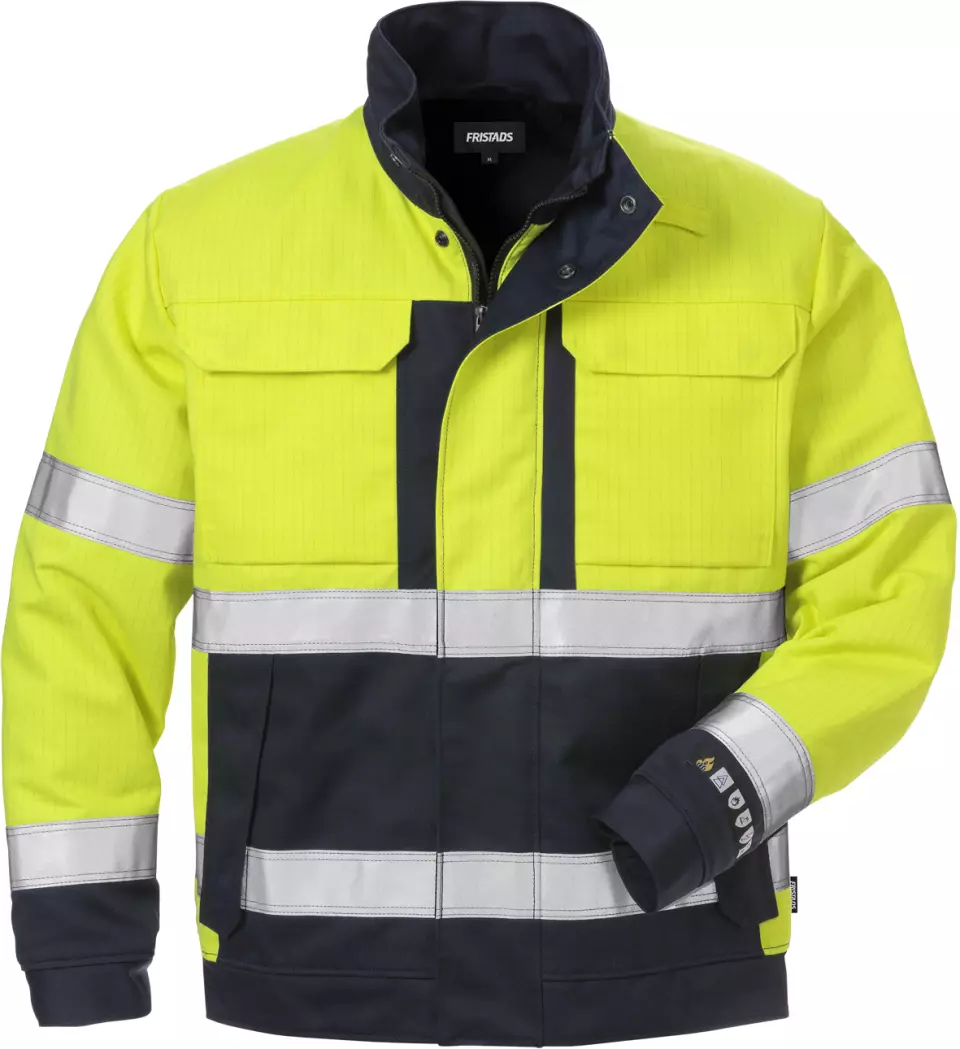
Material · Polyester, Cotton

Closure Style · Zipper
The method used to fasten the jacket or vest, affecting ease of use, security, and weather protection during work activities.

EN ISO 20471 · Reflective Strip Area Grade 2
Provides an intermediate level of visibility for use in moderate-risk environments. This makes you more visible day and night to traffic moving at speeds up to 60 km/h, ideal for road work or delivery drivers.
Fristads
Flame High Vis Winter Jacket Class 3 4588 FLAM
Flame High Vis Winter Jacket Class 3 4588 FLAM
4.9 / 5
249,83 €
Choose size
Free delivery
Features You'll Love

Material · Polyester, Cotton

Closure Style · Zipper
The method used to fasten the jacket or vest, affecting ease of use, security, and weather protection during work activities.

EN ISO 20471 · Reflective Strip Area Grade 2
Provides an intermediate level of visibility for use in moderate-risk environments. This makes you more visible day and night to traffic moving at speeds up to 60 km/h, ideal for road work or delivery drivers.
Product description
This fully lined multi-norm winter jacket offers comprehensive protection for demanding work environments with flame, arc flash and high-visibility requirements. The jacket meets multiple international safety standards and is suitable for industrial washing. With practical pockets, adjustable elements and an extended back section, it ensures optimal comfort and functionality in winter working conditions.\n\nProduct Features:\n- Fully lined for optimal cold protection\n- Concealed zip with snap fastener strip up to the upper collar edge\n- 2 spacious chest pockets with flap and concealed snap fastener closure, one with D-ring\n- 2 front pockets with concealed snap fastener closure\n- Inner pocket with button and mobile phone pocket with hook and loop fastener and flap\n- Adjustable waist with buttons and adjustable cuff with snap fastener closure\n- Ribbed knit at cuff and extended back section\n- Concealed buttons in collar for hood attachment 125946\n\nTechnical Details:\n- Outer material: 365 g/m²\n- Lining: 315 g/m²\n- Body zone: Upper body\n- Season: Winter\n- Suitable for industrial washing according to ISO 15797\n- Outer material tested after 50 washes\n\nStandards:\n- EN 61482-1-2 APC 2\n- EN 61482-1-1-1 ELIM: 43 cal/cm² ATPV: 48 cal/cm²\n- EN ISO 11612 A1 B1 C1 E2 F1\n- EN ISO 11611 A1 Class 1\n- EN 1149-5\n- EN ISO 20471 Class 2 and Class 3\n- EN 342\n- OEKO-TEX® certified
